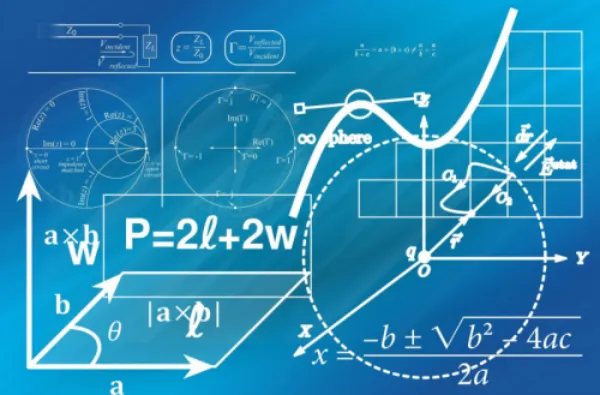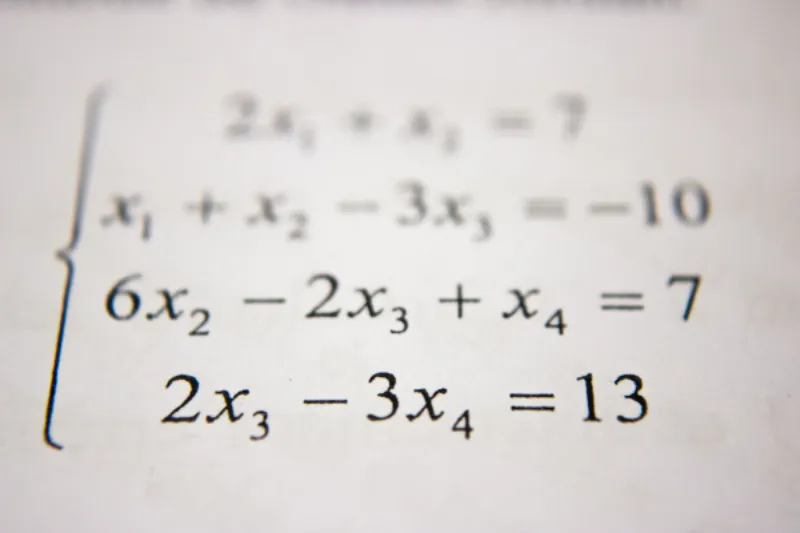Due to the recent ubiquity of big data, the data science sector has grown exponentially in this decade, producing a booming demand for data scientists and engineers in nearly every division of global organizations and enterprises. As per LinkedIn, data science jobs have increased by 650% since 2012 in America alone. These are astonishing metrics! With data science as the new shining opportunity, you have likely considered a career down this pathway.
However, many are discouraged mainly due to the mathematical prerequisites one needs to be employed with before stepping into this field. While the discipline of data science is concretely built on pure math, the good news is that the amount of math you need to become a practicing analytical expert is much less than it may seem.
Maths in Data Analytics – An Overview
Mathematics is an essential foundation of any contemporary discipline of science. Therefore, almost all data science techniques and concepts, such as Artificial Intelligence (AI) and Machine Learning (ML), have deep-rooted mathematical underpinnings. It goes without saying that to become a top data scientist, you absolutely need all other aspects of knowledge such as programming expertise, business understanding, and a curious mind required for analytical problem-solving. However, it’s always advantageous to be aware of the machinery under the hood rather than just being the oblivious driver with minimal knowledge about the car itself.
Thus, we see that a comprehensive, solid understanding of the mathematical machinery behind the brilliant algorithms implemented by data scientists is bound to give you an edge over your peers. No matter what sort of love-hate relationship you had with math back in high school, newcomers who aim to begin their career path down data analytics need to be familiar and proficient with the following three major pillars of mathematics: linear algebra, statistics, and probability, and calculus.
The knowledge of these topics is particularly significant for workers who are switching careers from other fields. Although those fields may secure work experience with spreadsheets and numerical calculations, the mathematical expertise required in data science can be significantly contrasting.
Three Pillars of Math That Data Analytics Requires
While mathematics isn’t the sole educational requirement to pursue a career in data science, it is nonetheless the most salient prerequisite. Understanding and translating business challenges into mathematical terms is one of the prime steps in a data scientist’s workflow. Thus, let’s start by looking at the three pillars of math that you will need to be familiar with before stepping into the field of data analytics.
- Linear Algebra
This branch of mathematics is concerned with solving linear equations for unknown values. More relevantly, it forms a major foundation upon which ML algorithms are built and implemented. Although the interplay of linear algebra and ML is outside the scope of a general data analyst, many core concepts of the subject are employed during data preprocessing, data transformation, and model evaluation. Here are the topics you should be familiar with:
- Matrices
- Transpose and Trace of a matrix
- Determinant and inverse of a matrix
- Dot products
- Vectors
- Eigenvalues and Eigenvectors
The key takeaway is that most machine learning models and datasets can be expressed in matrix form. Therefore, familiarity is required with these concepts as linear algebra is an essential tool in data science and ML. Moreover, vectors can be used to analyze how different a prediction from a data set is compared to the expected output after data transformation. Matrix transformations also allow these vectors to be manipulated, allowing data representation in 2-D or 2-D space during data transformation. Technical applications aside, more appreciably, linear algebra teaches us to think through a series of logical steps, preparing a problem-solving, inquisitive mindset–an essential requirement for a top data analyst.
- Probability & Statistics
Although these are two distinct spheres of mathematics, probability and statistics form the basis of data science in unison. The probability theory is essential for making estimations and predictions, which can be enhanced for further analysis through statistical methods. To summarize, statistical methods are largely dependent on theories of probability, and together, they are both reliant on the data itself. Therefore, it is not uncommon to lump the two fields together in the study of data science.
Probability is concerned with finding how likely a situation is to happen, which allows data scientists to draw conclusions and decision-making during uncertain scenarios. As such, one should be aware of the following sub-topics:
- Random variables and distributions
- Central limit theorem
- Conditional probability and Bayes theorem
- Conditional distributions and expected values
- Markov chains
The practical application of probability in data analytics is best understood through ML. In ML, imperfect models, noisy data, and limited coverage of the problem area form the three primary sources of uncertainty. However, these sources can be identified with the correct probability tools, allowing them to be mitigated.
On the other hand, statistics form the core of sophisticated AI and ML algorithms, capturing and translating data trends into actionable evidence. Some of the fundamental statistics needed for data science is:
- Descriptive statistics and visualization techniques
- Measures of central tendency and asymmetry
- Variance and Expectations
- Linear and logistic regressions
- Rank tests
- Principal Components Analysis
To summarize, while descriptive statistics help us to understand our data better by understanding underlying patterns and characteristics of data sets, inferential statistics allow data analysts to make predictions about a population based on sample data. This can, in turn, enable businesses to foresee whether a particular product will be well-received by a specific market or not.
- Calculus
Many newcomers who didn’t fancy calculus back in high school will be in for a rude shock as calculus forms an integral part of ML and AI algorithms. The good news, however, is that you don’t need to tarry too deep, and an understanding of the fundamental principles of calculus suffice for most analytical positions.
In essence, calculus is the study of continuous change. It works side-by-side with linear algebra to train and improve algorithms over time. It is crucial to understand that behind every ML model, there is an optimization algorithm that is heavily derived from core concepts of calculus. For instance, many of these models utilize Gradient Descent Algorithm (GDA), which can be used to build a linear regression estimator. Using different tools of calculus, GDA can find the minima of a function to forecast future trends: e.g., predicting future housing prices by analyzing housing data sets.
As such, a thorough understanding of the following topics is preferred:
- Continuity and limits
- Differentiation and its theorems
- Product and Chain rule
- Taylor’s series and infinite series summation
- Fundamental and mean value theorems of integral calculus
- Gamma and Beta functions
- Multi-variable functions
Other than these big three, which form the foundational pillars of data science, there are also other miscellaneous mathematical tools that aid in running the analytical machinery under the hood. One of these is discrete maths; although it does not receive much spotlight in the field of data science, it forms the heart of all computational systems. It is primarily concerned with data structures, set theory, and the basics of logic and proof techniques. Since discrete math deals with numbers having finite precision, it is particularly fundamental for computer systems as they are built on discrete packets of memory–bits. Furthermore, one should also be able to work around information theory as it plays a chief role in many optimizations used in data science. This is highly applicable as virtually every algorithm aims to minimize some estimation error, subject to certain constraints.
Applications of Mathematics in Data Science
As seen in the examples before, understanding the role of math in practical scenarios makes it easier for us to comprehend why businesses require data analytics. Let’s look at some further applications of math, popular in data science and ML technologies, utilized by nearly all leading industries globally:
- Natural Language Processing (NLP) is implemented in chatbots, sentiment annotation, language translation, and speech recognition. Its implementation has its roots in linear algebra, which is used here for word embeddings, and predictive and modeling analysis. It’s one of the most progressive fields in AI today, and there have been significant strides being made in it lately.
However, without a solid understanding of fundamental mathematics involved, you stand close to zero chances of understanding how machines could be used effectively to understand human language, let alone contribute anything valuable to it.
- Computer vision is quite prevalent in the agricultural and healthcare sector. Its basis for image representation and processing to gain high-level understanding from a particular source is also derived from linear algebra.
Again, you might be able to become a Computer Vision practitioner by using the high-level APIs or libraries already available, but you will be far from contributing anything to the field or even optimizing tasks according to your requirements.
- Statistics and probability also form the cornerstone in testing the effectiveness of potential marketing tactics and sales of future products. It simply enables businesses to understand their customers better, allowing for more personalized marketing with significantly lower chances of failure.
This is directly linked to data analytics. There are, however, a lot of tools out there that help you develop data analytics systems without actually diving into the depths of statistics and probability; however, you still need surface-level knowledge regarding the subject to effectively use those tools.
-

This is how Big Data Analytics differ from Regular analytics
-

Data Analysis Vs. Data Analytics – Which is Which?
-

Is Data Analysis Qualitative or Quantitative? (We Find Out)
Key Takeaway
If all of this technical mathematical jargon has intimidated you, worry not! I assure you that it is perfectly possible for anyone to launch their career in data science without being a mathematical wizard. Although proficiency with numbers and foundational knowledge of the big three pillars of math is helpful, much of the analyst work is based on following a series of logical steps. As such, anyone can succeed in this domain, provided they are good at following instructions.
Furthermore, the amount of math one should know and the amount one needs in daily analytical work are two very distinct things. In most cases, there are only a few topics of math that the analysts use on a day-to-day basis. While it is undoubtedly true that learning the more advanced subsections is bound to add valuable tools and insight to your arsenal, sticking to the fundamental mathematical concepts in data science nonetheless suffices for 70% or more of most analytical positions (tds).
Fortunately for you, if you are already done with a few years of university courses or took advanced mathematical courses back in high school, you are already familiar with most of these fundamental subsections of math essential for data science. If no, fret not! The internet is rife with excellent (and free!) sources that can help kickstart your mathematical learning experience:
- Data Science Math Skills – Coursera
- The Essence of Linear Algebra – 3Blue1Brown
- Probability and Statistics – edX
- Introduction to Calculus – Coursera
As a data science aspirant, it is vital to keep in mind that theoretical foundations are essential in building reliable and efficient models implemented in data analytics. Therefore, one should invest sufficient time in brushing up on the fundamental mathematical concepts discussed in this article to break into the field of data science and analytics.



